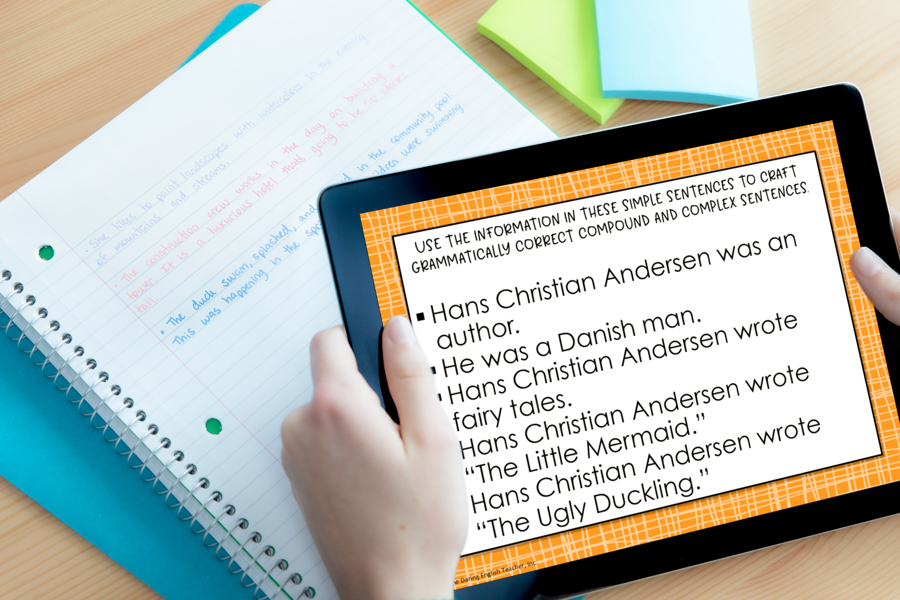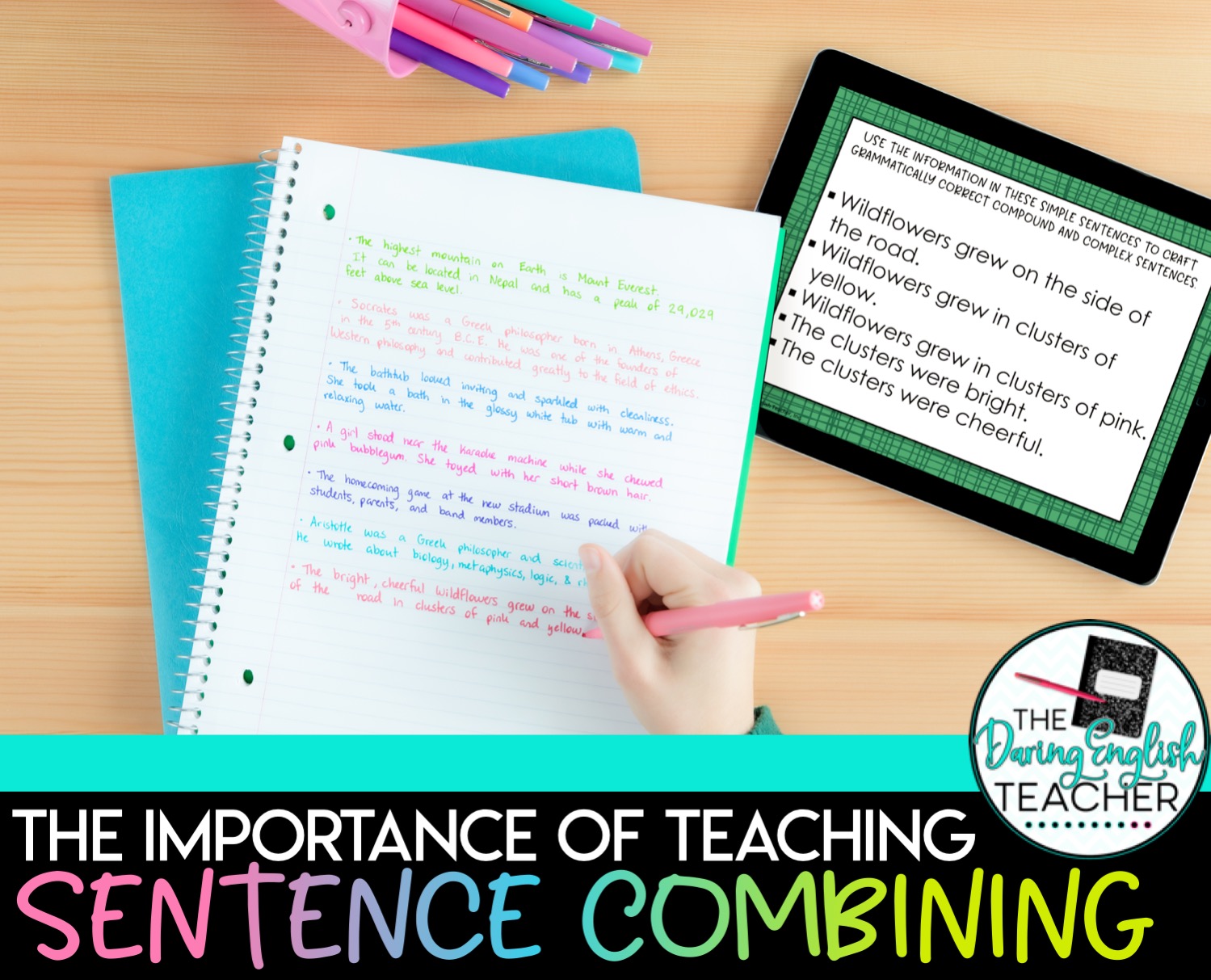We’ve all read those papers where a student uses short choppy sentences with little variety. It can be painful to read, and even more difficult to assess, for sure!
How can we encourage and teach students to move beyond writing with simple sentences and add texture and depth to their writing?
One way to teach students how to write compound and complex sentences is to teach them to combine thoughts and clauses. You can do this to teach and model using punctuation or even how to reorder the syntax of a sentence. There are many different ways to describe this process. I like to call it sentence combining!
Why Sentence Combining is Important
I like to tell my students that one of their jobs as a writer is to keep their reader interested. One of the biggest factors of how a piece is received is sentence fluency. Sentence fluency is the flow or cadence of a piece of writing. It should be relatively effortless to read a piece of writing.
If a piece of writing is read out loud and the reader stumbles through it, that indicates there is something wrong with the fluency. There can be a number of reasons why, but usually it’s due to a lack of variety of sentence structure, including length and repetition of sentence beginnings.
If sentences lack variety, it gives the feeling of an early reader meant for emergent readers. Meaning: it can sound juvenile, like a children’s book.
As an added piece of encouragement, I let them know that as their reader (and the one giving them the grade), they should take special care to make sure the piece flows.
Sentence Combining Teaching Resources
To help my own students improve their writing, I teach sentence combining as bellringers. Each day I give students a sample sentence (or sentences) and have them combine them to make more complex sentences!
 |
| sentence combining as bellringers |
It is the perfect opportunity to teach punctuation and syntax in daily bite-sized pieces. When given one sentence at a time, students feel supported and confident in mastering the skills!
You can get the bundle (linked above) for the entire year, or you can simply try it out and get Volume 1 to start! I also have holiday-themed bell ringers as well for Halloween and Valentine’s Day! Either way, your students will be learning and writing more sophisticated sentences in no time! You can also check out my blog post over on the Secondary English Coffee Shop all about using task cards in the secondary English classroom where you can download a free sentence combining task card resource!
How to Organize Your Bell-ringers
When I use the Sentence Combining Bellringers, I start class with students recording their answers on my FREE Bell-Ringer and Do Now Recording Sheet. I print them double-sided and three-hole punch them for students’ binders. When their daily work is complete, I give each student a stamp. Students are then responsible for holding onto their log for four weeks, at which point, I will collect them.
Looking for more? Check out these other TPT resources designed for an entire school year!
Secondary English Curriculum: Common Core – Grades 7-10
Ultimate Writing Bundle for Secondary English



